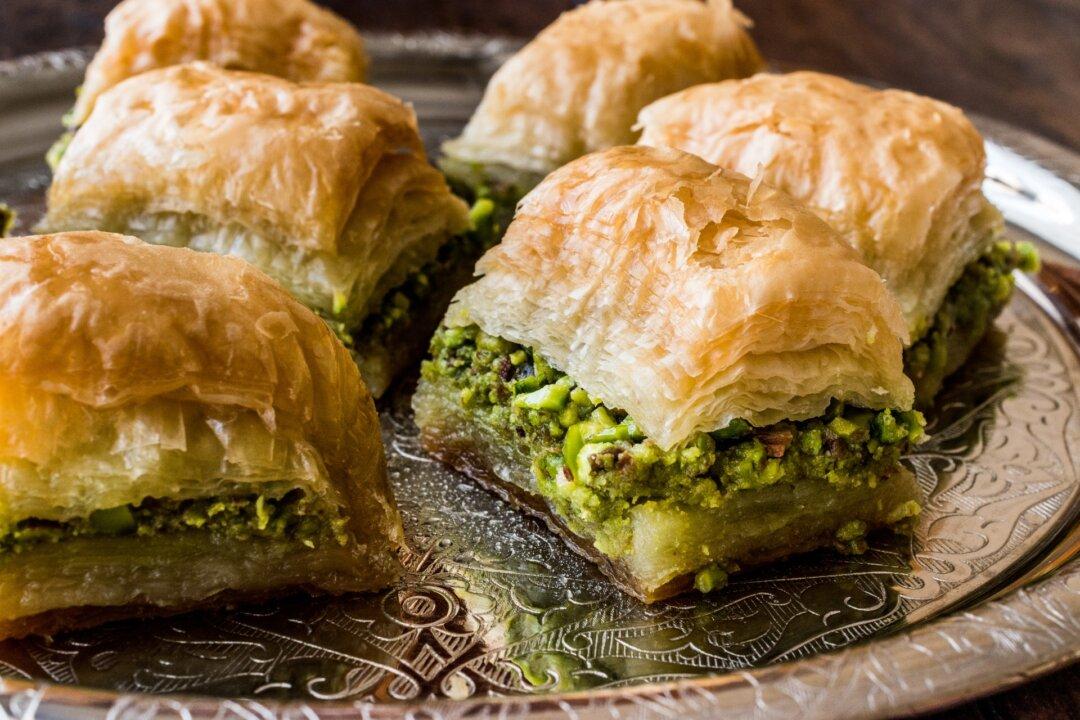Turkish Baklava, Antep-Style
Your mission, if you choose to accept it, is a delicate one. The following is a recipe for Antep baklava adapted from Aylin Oney Tan’s book, “A Taste of Sun and Fire: Gaziantep Cookery.”The dough must be kneaded well so that it is pliable but not sticky. You will be dividing it into 40 layers and rolling each as thin as you can make it; flour with a higher gluten content helps with this. Tan’s recipe calls for layering circular sheets in a circular tray 50 to 60 centimeters (about 20 to 24 inches) in diameter. If you use a standard 18 x 13-inch half sheet pan and roll out rectangular layers, the recipe will leave you with just a bit of extra dough—if you manage to roll it so thin. Alternatively, halve the recipe and use a 9- x 13-inch pan.





